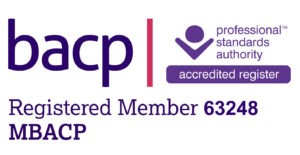Understanding EMDR Therapy: A Proven Approach to Healing Traumatic Memories
When faced with the aftermath of trauma, it’s common to feel overwhelmed, stuck, and haunted by distressing memories. However, there’s hope in the form of Eye Movement Desensitization and Reprocessing (EMDR) therapy, a proven approach to healing traumatic memories and reclaiming one’s life. EMDR offers a unique and effective method for processing and resolving past traumas, allowing individuals to move forward with renewed strength and resilience.
EMDR was developed in the late 1980s by psychologist Dr. Francine Shapiro, who discovered that bilateral eye movements could reduce the intensity of disturbing thoughts and memories. Since then, EMDR has evolved into a comprehensive psychotherapeutic approach recognized by leading mental health organizations, including the World Health Organization (WHO) and the American Psychological Association (APA).
At the core of EMDR therapy is the belief that traumatic experiences can become “stuck” in the brain, causing distressing symptoms such as flashbacks, nightmares, and heightened anxiety. Through a structured eight-phase process, EMDR helps individuals access and process these memories, allowing for adaptive resolution and healing. Here’s a breakdown of the usual process of EMDR therapy this may vary slightly with each person and progress at different rates and may on occasions been combined with other therapies and techniques but the fundamental elements of the EMDR would remain the same.
1. **History and Assessment:** In the initial phase, I would take a comprehensive assessment to understand of your history, symptoms, and treatment goals. This phase also involves establishing a sense of safety and trust between us.
2. **Preparation:** Before delving into traumatic memories, we would talk about and you may learn coping skills and relaxation techniques to manage distress and maintain stability throughout the therapy process. This phase is crucial for ensuring that you feel empowered and capable of navigating your emotions safely.
3. **Assessment and Desensitization:** Using bilateral stimulation, such as eye movements, hand taps, or auditory tones, I would guide you in accessing and reprocessing traumatic memories. This phase involves allowing the mind to make connections between past experiences and present emotions, ultimately reducing the emotional charge associated with the memories.
4. **Installation:** Once the distress associated with traumatic memories diminishes, I would work with you on strengthening positive beliefs and coping mechanisms to replace negative self-perceptions and maladaptive coping strategies.
5. **Body Scan:** EMDR acknowledges the interconnectedness of mind and body, so helping you to learn to identify and release tension held in your body as a result of trauma. This phase promotes a holistic approach to healing, addressing both psychological and physiological aspects of trauma.
6. **Closure:** Each session concludes with a sense of closure and stability, ensuring that you feel grounded and safe as they transition back to their daily lives.
7. **Reevaluation:** Throughout the therapy process, the I would periodically reassesses the client’s progress and adjusts the treatment plan as needed to address emerging issues or goals.
8. **Integration:** As you continue to process and resolve traumatic memories, you would experience a sense of integration and wholeness, reclaiming aspects of yourself that were previously overshadowed by trauma.
Numerous studies have demonstrated the effectiveness of EMDR therapy in treating traumatic memory and associated symptoms. For example, a meta-analysis published in the Journal of Traumatic Stress found that EMDR was as effective as cognitive-behavioral therapy (CBT) in reducing symptoms of post-traumatic stress disorder (PTSD) and depression. Additionally, research has shown that EMDR therapy produces significant and lasting improvements in individuals with a wide range of trauma-related disorders, including combat-related PTSD, childhood abuse, and natural disasters.
One of the key advantages of EMDR therapy is its efficiency. Unlike traditional talk therapy, which may take months or even years to produce noticeable results, EMDR often yields significant improvements in a relatively short period. Many clients report feeling a sense of relief and liberation after just a few sessions, paving the way for long-term healing and personal growth.
In conclusion, EMDR therapy offers a powerful and evidence-based approach to healing traumatic memories and reclaiming one’s life. By accessing the brain’s natural capacity for processing and integrating experiences, EMDR empowers individuals to overcome the debilitating effects of trauma and move forward with renewed hope and resilience. If you or someone you know is struggling with the aftermath of trauma, EMDR therapy may provide the support and guidance needed to embark on a journey of healing and transformation.


